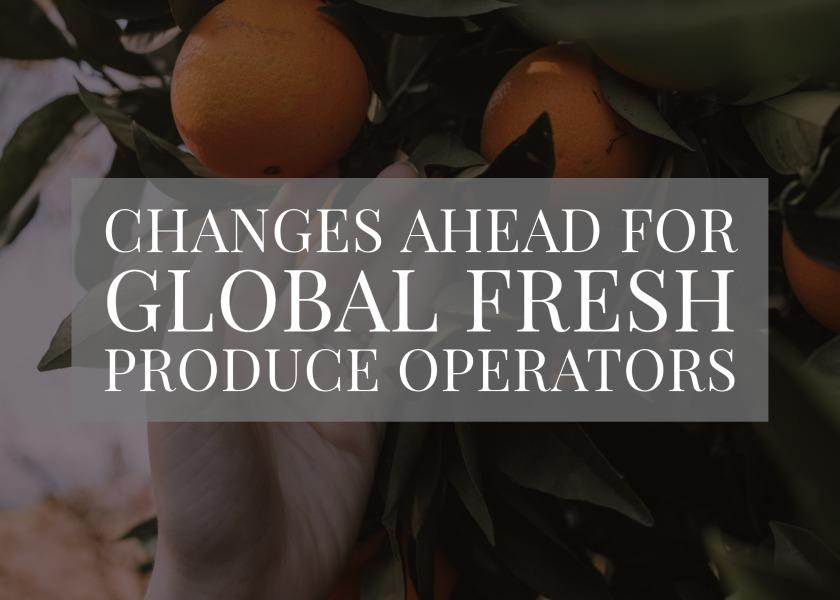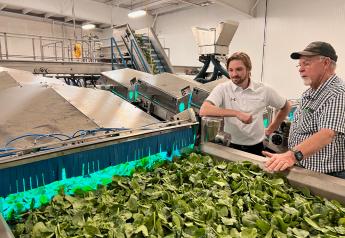Changes ahead for global fresh produce operators

The fresh produce global supply chain was resilient enough to come through the peak of the COVID-19 pandemic intact, if a little dented.
However, adjustments and improvements are still needed as conditions begin to normalize, panelists said April 13 during the Canadian Produce Marketing Association’s Fresh Week education track.
The global session featured moderator John Anderson, chairman, CEO and managing partner of The Oppenheimer Group, and four other panelists:
- Philippe Binard, general delegate of Freshfel Europe;
- Nelli Hajdu, secretary general at the Southern Hemisphere Association of Fresh Fruit Exporters;
- Hans Maurer, director of strategy and research at United Fresh New Zealand; and
- Robert Guenther, senior vice president of public policy for the United Fresh Produce Association.
COVID challenges
The panelists talked about the shared industry challenges, both brought by the COVID-19 pandemic, and those issues that existed before.
The growing complexity of market access requirements was not made any easier by the pandemic, Hajdu said. Investing resources in monitoring policy developments in key markets such as the U.S., China, European Union and Asian countries is important, she said.
The second big issue is sustainability and its impact on the food sector, she said.
“What does sustainability mean in the global context?” she said, noting the Green Deal in the European Union and different perspectives about sustainability in other markets.
The pandemic also brought the need for effective crisis communication to the forefront.
Binard said 2020 began with talk of sustainability and Brexit. As soon as pandemic struck, he said all attention was focused on the implications of COVID-19. The global, unprecedented nature of the crisis touched many issues, including agriculture, industry services, the health of the population, lifestyle, travel and more.
While fresh produce is a sector that has been well protected in some respect because it is an essential sector, it has not been business as usual for operators.
Additional costs, the absence of foodservice demand, food safety requirements, labor shortages and restrictions on labor movement were all complications for European operators. In addition, there have been logistic problems with moving produce across borders, including problems with availability of containers.
At the same time, Binard said there were silver linings, including the fact that people spent more time at home. With that reality, more consumers were re-discovering cooking and preparing fruits and vegetables.
As the crisis begins to ease, changes in consumer behavior will have implications for consumption, he said.
What will change and what will remain the same may depend on timing, Binard said.
“There are still a lot of questions; we don’t know when we’ll be able to reopen restaurants to normal business in the foodservice sector,” he said. “So, I think there are still a lot of questions for the coming months.”
In North America, Anderson said the shift of consumers to eating out more often will likely come in the third and fourth quarter of 2021.
Maurer said that New Zealand produce operators evolved to meet changing market conditions. At the same time, government lockdowns associated with pandemic control were not fully informed by industry knowledge, he said.
During the pandemic, consumers were wanting packaging that would allow them to get in and out of stores as quickly as possible, he said.
In the U.S., Guenther said that the pandemic brought changes and challenges to the normal produce distribution of 40% to foodservice and 60% to retail.
During the early days of the pandemic, it was very difficult to shift supply from foodservice to retail, Guenther said.
“We had billions of dollars of product in the supply chain, and it was very difficult to make that change,” he said.
Education of regulators and lawmakers about how the industry works was necessary and difficult, he said.
Panelists said increased digital connectivity is needed in all parts of the world. Virtual transmitting of food safety and phytosanitary certifications is one need, they said.
Maurer said New Zealand exporters and importers have changed their behavior as life during COVID-19 became less predictable.
Importers are operating currently at about 60% of pre-pandemic import schedules and are taking a “hand-to-mouth” approach this year, he said.
European consumers are focused more on local product during the pandemic, Binard said.
“I am not very sure that in real figures (sales) have changed a lot because I think the assortment is primarily local, then national and then international,” he said.
Binard predicted that European consumers will continue their focus on local produce as the pandemic eases.
Guenther said that U.S. produce advocates hope to overcome challenges relating to President Trump’s trade policies.
“We’re trying to unwind that and get back to some normalcy in our trade relationships with a lot of our partners,” he said.







